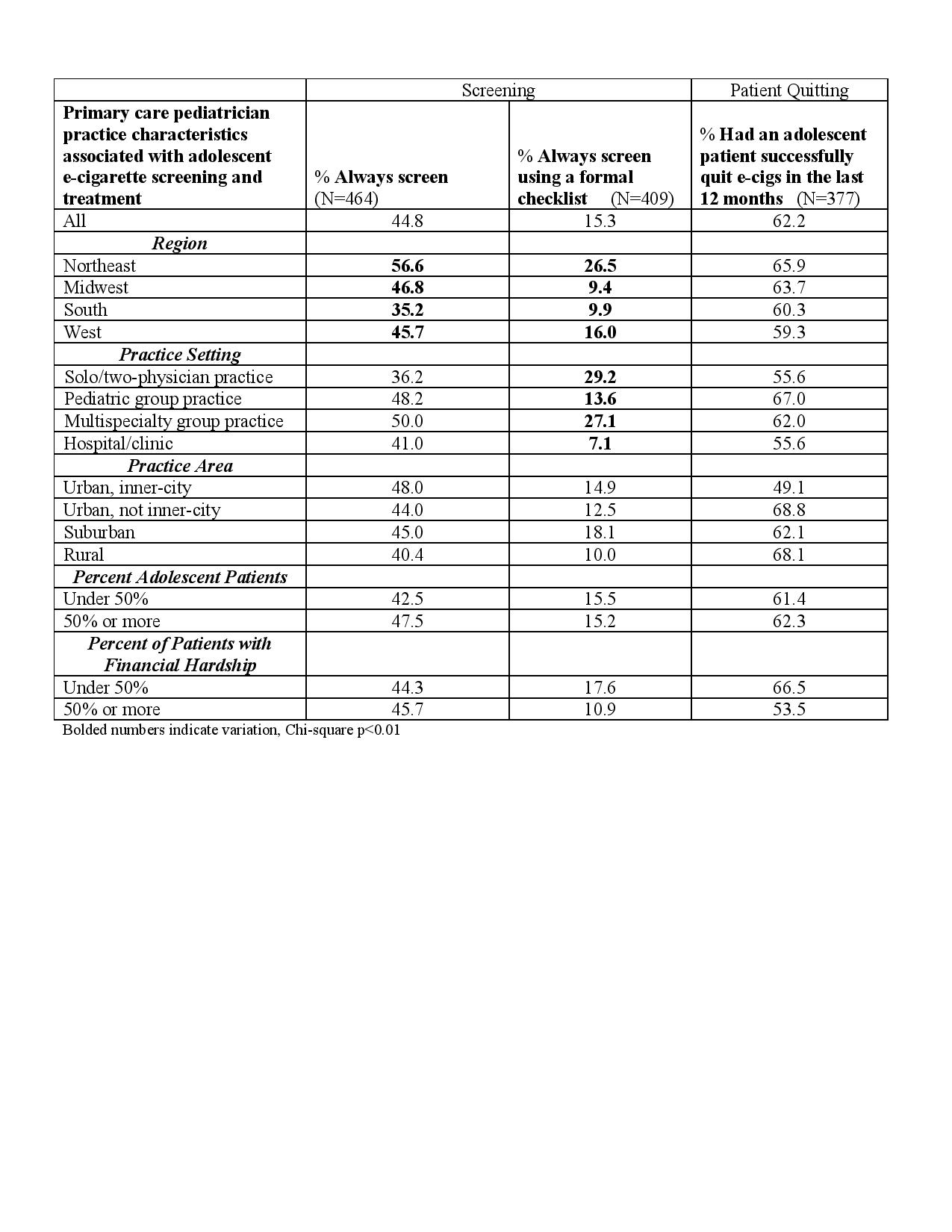Adolescent Medicine: Substance Use
Adolescent Medicine 2
5 - Attitudes and Screening Practices for Adolescent E-Cigarette Use in Pediatric Primary Care
Saturday, April 29, 2023
3:30 PM - 6:00 PM ET
Poster Number: 5
Publication Number: 5.2
Publication Number: 5.2
William H. Burr, American Academy of Pediatrics, Itasca, IL, United States; Julie Gorzkowski, American Academy of Pediatrics, Itasca, IL, United States; Deepa Camenga, Yale School of Medicine, New Haven, CT, United States; Scott E. Hadland, Mass General for Children, Boston, MA, United States; Kenneth Zoucha, University of Nebraska Medical Center, Omaha, NE, United States

William H. Burr, PhD (he/him/his)
Pediatrician Surveys
American Academy of Pediatrics
Itasca, Illinois, United States
Presenting Author(s)
Background: Despite recent declines, e-cigarettes remain the most common tobacco product used by youth. In 2022, 14% of high school students indicated they currently use e-cigs. E-cigs have both short- and long-term health effects. The pediatric visit presents important opportunities to screen and intervene for e-cig use.
Objective: Describe primary care pediatricians’ attitudes and screening practices around adolescent e-cig use; Examine practice characteristics associated with screening and having seen a patient who quit e-cigs in the past year.
Design/Methods: The 2021 AAP Periodic Survey, a nationally representative survey of non-retired US AAP members (residents excluded), collected data on pediatricians’ attitudes on adolescent e-cig use, screening practices for e-cig use, and frequency of seeing patients quit e-cigs. 43% completed the survey; data weighted by age for non-response bias. Analytic sample includes pediatricians who provide health supervision (n=471). Chi‑square tests examined practice characteristics (i.e., practice area, US region, setting, and % patients who are adolescents and % patients experiencing financial hardship) and 1) frequency of screening adolescent patients for e-cig use (Always vs Often/Occasionally/Rarely/Never), 2) frequency of using a formal checklist when screening adolescent patients for e-cig use (Always vs Often/Occasionally/Rarely/Never), and 3) reporting at least one patient successfully quitting e-cigs in the last 12 months.
Results: Nearly all primary care pediatricians agreed/strongly agreed “E-cig use will have a long-lasting impact on adolescents who use” (93%)[Figure]. Most also agreed/strongly agreed “Parents are often unaware when adolescents are using e-cigs” (87%) and “Patients believe e-cigs are a safer or less harmful alternative” (82%). Many pediatricians always screen adolescent patients specifically for e-cig use (45%); fewer always use a formal checklist when doing so (15%). Most reported having at least one patient successfully quit e-cigs in the last 12 months (62%). Pediatricians in the Northeast were more likely than those in other US regions to always screen for e-cig use and to always screen with a formal checklist (p< 0.01). No significant associations were found between practice characteristics and patients quitting [Table].
Conclusion(s): Although pediatricians recognize the adverse health impacts of adolescent e-cigarette use, e-cigarette screening rates vary by region. Further resources and approaches are needed to improve the adoption of standardized screening practices in pediatric primary care.
.jpg)

